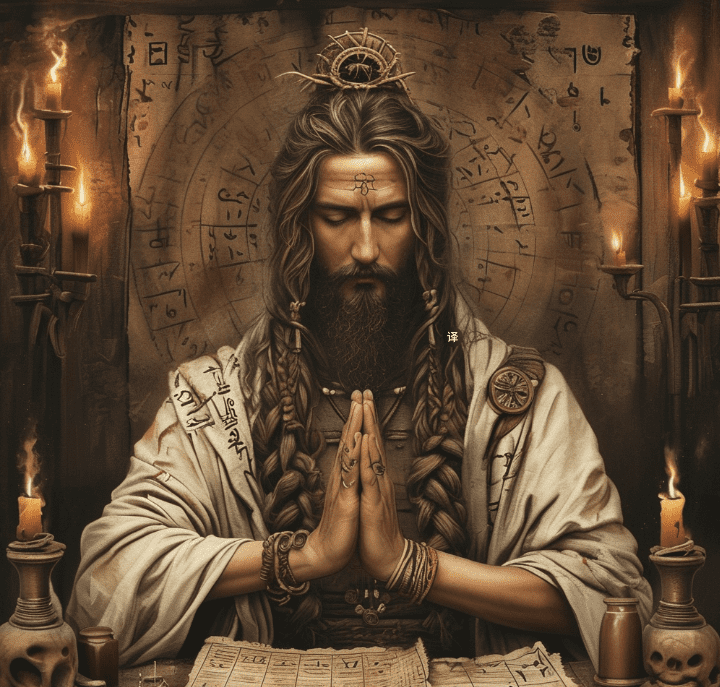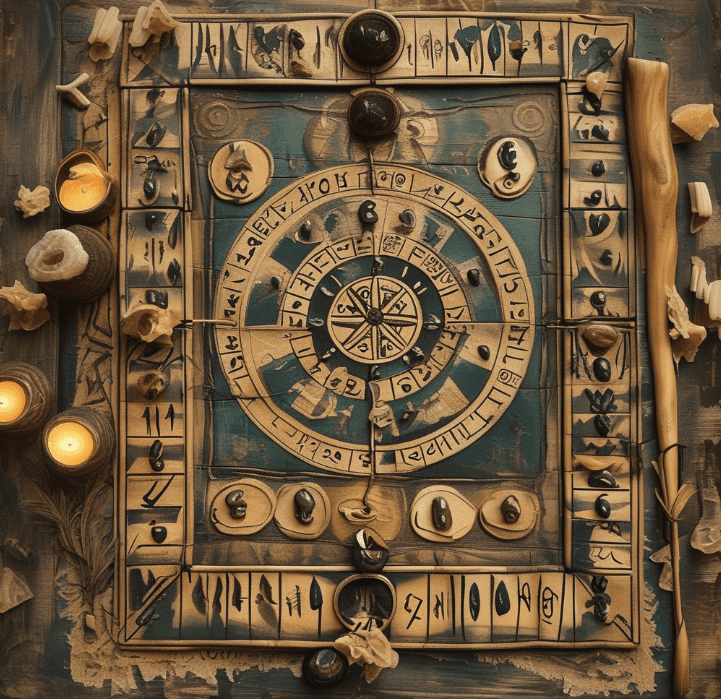1. The Essence and Expression of Yin and Yang in the Eight Characters
Yin and Yang in the eight character system are the essence, while the Five Elements and the Ten Deities are the means of expression.
Yang represents emptiness, vacancy, clear qi, and spirit. It is the positive energy that guides people to success.
Yin represents solidity, fullness, physical form, and matter. It is the negative energy that leads people to degradation and failure.
2. The Attributes of the Five Elements and the Ten Deities
The Five Elements mainly represent natural attributes, and the Ten Deities mainly represent social attributes.
Natural attributes refer to the essential appearance and laws of people, things, and events, which are objective. For example, a person’s talent, temperament, gender, height, build, skin color, appearance, good or evil nature, uprightness or wickedness, lifespan, and fortune, etc.
Social attributes refer to the attributes assigned to things by society. They are superficial and subjective, such as social division of labor, status hierarchy, job positions, professional titles, identities, social status, wealth, and poverty.
Social attributes and natural attributes are independent of each other. Wealth, poverty, and fortune have no relation to lifespan and good or bad luck.
3. The Combination of Eating God and Seal and Related Fate Theories
When the Eating God (Shanguan) is combined with the Seal (Yin) and is effectively utilized, it is related to cultural and technical work.
Those with a Metal Water Eating God combination are mostly engaged in technical work, while those with a Wood Fire Eating God combination are mostly involved in cultural work.
For a female with an effectively used Metal Water Clear (Jin Bai Shui Qing) pattern in her eight characters, she is surely a beauty with fair and tender skin. If there are also the Officer (Guan) and Seal in the pattern, she is not only beautiful but also elegant. If the corresponding Ten Deities of Metal Water are Peers (Bijie) or Eating God, she is only beautiful but lacks elegance.
4. Differences in Viewing the Five Elements and the Ten Deities
The interaction modes of the Five Elements are generation, restriction, transformation, punishment, conflict, combination, harm, and breaking. Good and bad fortune are determined by whether they are in a state of balance.
The Ten Deities focus on combination and configuration. Success and failure in life are judged by the auspicious or inauspicious configurations, and wealth, poverty, honor, and lowliness are determined by the existence or non existence of the pattern.
5. Analysis of the Life Chart and the Major Cycles
Analyze the combination in the life chart, and determine the timing in the years and major cycles (Daiyun).
Although the Officer Star (Guanxing) represents nobility, if the Seal (Yin) is not present, its noble quality cannot be fully realized.
No matter how prosperous the Eating God (Shanguan) is, if the Officer Star (Guanxing) is not present, there is no target for illegal behavior, and thus no official disasters will occur.
The Officer Star (Guanxing) is noble because of its functions of protecting wealth, highlighting the Seal, and restraining oneself to promote goodness.
The Seal Star (Yinxing) is auspicious due to its combinations of transforming the Killer (Sha), protecting the body, restraining the Eating God, and nourishing the body.
Wood can only realize its life value when it meets fire, and metal can only achieve its life value when it meets water.
By observing the combination and configuration of water and fire in the eight characters, one can understand a person’s achievements in the spiritual and cultural fields as well as in the economic and political fields.
Fire represents the sky and is connected to the divine. However, it must be combined with wood to reach the state of Wood Fire Transparency (Muhuo Tongming). Without wood, even if a pattern is formed, it cannot reach a high level in the spiritual and cultural aspects.
Water represents the earth and is a symbol of earthly power. However, it must be combined with metal and form a pattern to reach the state of Metal Water Clear (Jin Bai Shui Qing) and possess great power.
In real life, people dominated by wood or metal will be willing to help those dominated by fire or water, even to the extent of self sacrifice like moths flying into a flame.
If the fire in the eight characters is very prosperous or has a storage (Ku), and the combination is good, but there is no wood, achievements can only be made in the major cycle when wood appears, regardless of whether wood is a favorable or unfavorable element.
Those likely to achieve success in the spiritual and cultural fields mostly have eight character patterns with fire as the dominant and useful element, but it is not necessary for the day stem to be fire.
Teachers correspond to the Seal Star (Yinxing) and the Eating God and Hurting Officer (Shishang). The Five Elements are the foundation, and the Ten Deities are the manifestation. Teachers are the disseminators of orthodox culture and the shapers of the spirit. The corresponding Five Elements are wood and fire.
Jia Wood represents orthodox learning and has the image of textbooks.
Yi Wood represents non mainstream and metaphysical learning. If it is combined with Ren or Gui Water, it has the image of pornographic books or metaphysics.
Bing Fire is yang fire, representing uprightness and selfless dedication.
Ding Fire is yin fire, representing earthly fire with a tinge of fame and fortune. In the combination of Ding and Ren, Ding pursues Ren because Ren represents earthly power.
Yin is equivalent to Jia, Mao is equivalent to Yi, Si is equivalent to Bing, Wu is in the four positive position and also represents orthodox culture. Xu is the fire storage, representing schools, temples, power stations, etc.
The Five Elements that best represent school teachers are Jia, Bing, Yin, and Xu.
If there is only wood (Jia or Yin) or only fire (Bing or Xu) in the eight characters, one can become a teacher stably only in the major cycle when the other element appears and forms the pattern of Wood Fire Transparency (Muhuo Tongming).
6. Changes in the Major Cycles when the Eating God is Prosperous
If the Eating God (Shanguan) is prosperous and unrestrained, it means there is no restraint. When an Officer (Guan) appears in the years or major cycles, the inauspicious combination of Eating God Meeting Officer (Shanguan Jian Guan) is formed, and there will surely be unfavorable events. If a rooted Seal (Yin) appears in the years or major cycles, the auspicious combination of Eating God Matched with Seal (Shanguan Pei Yin) is formed, and there will be corresponding auspicious events.
7. Innate Attributes and Postnatal Manifestations
The original nature is the innate attribute, which serves as the basis for postnatal manifestations. The innate is the substance, and the postnatal is the function. For example, wood and fire are innately yang, representing spirit, culture, and life; metal and water are innately yin, representing politics, matter, and destruction.
8. The Nature of the Eating God and the Killer
By nature, the Eating God (Shanguan) will conflict with the Officer (Guan) when they meet. However, if there is a Seal (Yin) or Wealth (Cai) in the original combination of the life chart, the Eating God is controlled and will no longer restrain the Officer when they meet.
The Killer (Qisha) is innately belligerent, homicidal, and good at subduing. If it is prosperous and restricted, it is a good hand at managing evil forces, such as soldiers, law enforcement officers in public security, procuratorial, judicial, and court units.
If the Killer (Qisha) is not restricted or transformed, its belligerent, homicidal, and destructive nature will be unleashed, manifested as butchers, underworld members, diseases, disabilities, harsh environments. If the日主 (Rizhu, the day stem representing the self) is strong enough to resist, there is no problem; but if it is weak and being controlled, one will suffer.
9. The Pursuit of Wood in the Five Elements
Wood innately pursues fire. Fire is its goal, achievement, and destination.
Without fire, even if wood forms a pattern and is wealthy, it still feels uneasy and lacks a sense of belonging.
If it is combined with water in the postnatal stage, it will be even more confused and directionless.
If it is Yi Wood, when it encounters Geng Metal, it will abandon water and turn to Geng. Because Yi Wood is like a beauty, and Geng Metal is like a hero. Although Yi Wood cannot achieve itself through fire, it can make a compromise and follow a hero. The beauty hero combination brings some comfort to the heart.
10. The Yin Yang Distinction in the Interaction of the Five Elements
Generation, restriction, and transformation are yang, which are the interaction modes of the heavenly stems.
Punishment, conflict, harm, and breaking are yin, which are the interaction modes of the earthly branches.
Combination is neutral and is an interaction mode of both the heavenly stems and the earthly branches.
Punishment, conflict, combination, harm, and breaking are used to determine the success or failure of the combination of the earthly branches.
For the combination of the heavenly stems to take shape, there must be an induction in the earthly branches, that is, having roots. Whether the roots are reliable depends on the results of the punishment, conflict, combination, harm, and breaking of the earthly branches.
11. The Relationship between Combination and Yin Yang
The Five Elements, the Ten Deities, and the palaces are the carriers of yin and yang, which respectively govern the natural and social attributes of people, things, and events.
Yin and yang are the soul of the combination.
Combination is the basis for judging good and bad fortune.
The harmony of yin and yang is the criterion for judging good and bad fortune.
Prosperity, decline, strength, and weakness are the ability states of the Five Elements and the Ten Deities.
Generation, restriction, transformation, punishment, conflict, combination, harm, and breaking are the interaction modes of the Five Elements and the Ten Deities.
Favorable and unfavorable elements are the value orientations of the Five Elements and the Ten Deities.
12. The Expression of Life Information in the Eight Character System
The eight character system expresses life information through the interaction modes and combination configurations of the Five Elements, the Ten Deities, and the palaces.
The Five Elements are in a state of motion and change, like a person’s meridians and qi blood.
The Ten Deities are attached to the Five Elements, like the skin, flesh, and clothing.
The palaces are fixed, like a person’s skeleton.
Yin and yang are the soul of a person.
The heavenly stems and earthly branches are the extensions of the Five Elements.
Generation, restriction, transformation, punishment, conflict, combination, harm, and breaking are the interaction modes of the Five Elements.
The combination of the heavenly stems and earthly branches is the configuration of the Five Elements and the Ten Deities.




